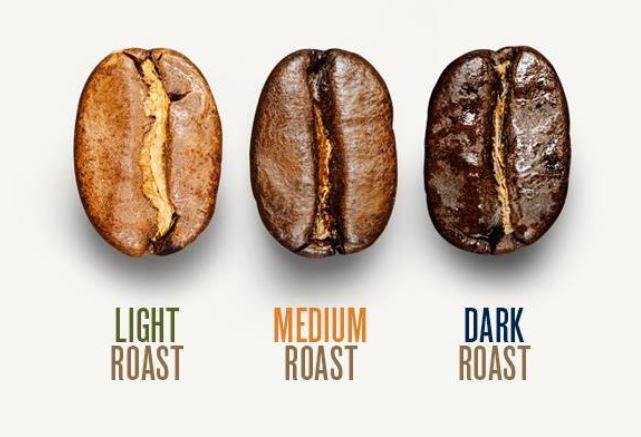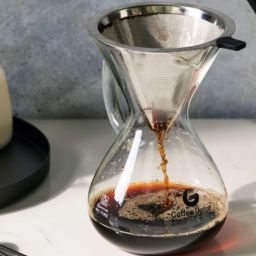
When you pop a single coffee bean into your mouth, you’re consuming anywhere from 0.6 mg to 2.9 mg of caffeine. That might not seem like a lot, but it adds up quickly depending on how you brew your cup! The type of coffee bean—Arabica or Robusta—and the way it’s roasted play huge roles in determining that tiny bean’s caffeine punch.
Key Takeaways
- Variety Matters: Arabica beans typically have less caffeine than their Robusta counterparts. So, if you’re looking for a milder caffeine boost, Arabica is the way to go. On the other hand, if you need a serious wake-up call, Robusta might just be your best friend.
- Roasting and Brewing: The darker the roast, the less caffeine—though the difference is minimal. But here’s where it gets interesting: the finer the grind and the hotter the water, the more caffeine you’ll extract during brewing.
- Health Talk: Moderate caffeine consumption can actually offer health benefits, like increased alertness and improved mood. However, too much might lead to sleep issues or a jittery feeling.
Types of Coffee Beans and Their Caffeine Content
Coffee lovers might already know this, but not all coffee beans are created equal, especially when it comes to caffeine content. The two most popular types of coffee beans are Arabica and Robusta, and they differ quite a bit in their caffeine levels.
Arabica Beans: These beans are the world’s favorite, known for their smooth, complex flavor profiles. When it comes to caffeine, they are somewhat lighter on the scale, generally containing about 1.2% to 1.5% caffeine by weight. This makes them a great choice for those who prefer a gentler caffeine buzz.
Robusta Beans: On the other hand, Robusta beans pack a stronger punch, with caffeine content about 2.2% to 2.7% by weight. This higher caffeine content contributes to Robusta’s harsher, more bitter flavor, which is why it’s often used in espresso blends for that extra kick.
The variety of the bean not only affects the flavor and aroma but also impacts how much caffeine ends up in your cup. Choosing between Arabica and Robusta can depend on your caffeine needs and flavor preferences.
Impact of Roasting on Caffeine Content
The roasting process plays a crucial role in the taste and caffeine content of your coffee, although it’s a common myth that darker roasts have more caffeine.
Chemical Changes: Roasting causes complex chemical transformations in coffee beans. As beans are roasted, they lose water and expand in size. The longer and hotter the roast, the more these effects are pronounced.
Caffeine Stability: Contrary to popular belief, caffeine is quite stable during the roasting process. This means that the caffeine content doesn’t actually decrease significantly in darker roasts. However, because darker roasted beans are lighter due to moisture loss, you end up using more beans when you measure by volume, potentially leading to more caffeine in your brew.
Light vs. Dark Roasts: If you measure your coffee by weight, the caffeine content should be roughly the same whether you choose light or dark roast. But if you measure by scoops, a dark roast could result in a stronger caffeine dose because it takes more beans to fill a scoop.
Brewing Methods and Caffeine Extraction
The way you brew your coffee can dramatically change how much caffeine ends up in your cup. Let’s dive into how different brewing methods like espresso, drip, and cold brew affect caffeine content, along with the roles of water temperature and brewing time.
Espresso
Espresso is known for its quick, intense brewing method, which uses high pressure to force hot water through finely ground coffee. This method extracts coffee very quickly and efficiently, leading to a small serving that packs a substantial caffeine punch.
Typically, a single shot of espresso might contain about 63 mg of caffeine, which is concentrated in just about 1 ounce of liquid. If you’re looking for a quick caffeine hit, espresso is your go-to.
Drip Coffee
The drip method, which includes most home coffee makers, brews coffee by dripping hot water over medium-ground coffee, which then filters through to a pot below. This process takes longer than making espresso, usually about several minutes. Because the water is in contact with the coffee grounds longer, this method can extract a significant amount of caffeine.
A standard 8-ounce cup of drip coffee can contain between 70 to 140 mg of caffeine, making it a favorite for a sustained energy boost throughout the morning.
Cold Brew
Cold brew coffee is made by steeping coarse-ground coffee in cold water for an extended period, typically 12 to 24 hours. Despite the lower water temperature, the prolonged exposure of water to coffee grounds allows for a very thorough extraction.
Interestingly, cold brew can often contain less caffeine per ounce than hot brewing methods; however, because it’s usually served concentrated, the total caffeine content can be quite high when not diluted. Cold brew is ideal for those who enjoy a smoother, less acidic taste and a milder but longer-lasting caffeine effect.
Role of Water Temperature and Brewing Time
Water temperature and brewing time are critical factors in caffeine extraction:
- Water Temperature: Hotter water extracts caffeine more effectively and quickly. That’s why espresso, which uses near-boiling water, can extract a lot of caffeine in a short burst. In contrast, the cold water used in cold brew takes much longer to pull caffeine out of the beans, leading to a different profile of caffeine extraction.
- Brewing Time: The longer the water is in contact with the coffee grounds, the more caffeine is usually extracted. This is evident in methods like French press or cold brew, which steep the coffee for several minutes to hours, leading to a higher caffeine concentration. In contrast, espresso’s quick extraction results in a different balance of flavors and caffeine.
Health Implications of Caffeine
Caffeine is a familiar friend to many, offering both perks and drawbacks. Consuming caffeine can increase alertness, improve mood, and enhance brain function. It’s also been credited with boosting metabolism and enhancing exercise performance. However, it’s not all good news; too much caffeine can lead to jitteriness, anxiety, heart palpitations, and may disrupt sleep patterns.
For most adults, consuming up to 400 milligrams of caffeine a day appears to be safe—roughly the amount in four cups of brewed coffee. But sensitivity varies, and some might find even small amounts triggering adverse effects.
How to Choose the Right Coffee for Your Caffeine Needs
Choosing the right coffee for your caffeine needs doesn’t have to be complicated. If you’re sensitive to caffeine, consider opting for Arabica beans, which generally have less caffeine than Robusta beans. For those who prefer a lighter caffeine touch, light roasts or even decaf might be the way to go, since they offer less caffeine per scoop compared to darker roasts.
FAQs
Does the size of the coffee bean affect its caffeine content?
The size of the coffee bean doesn’t directly impact its caffeine content. Rather, caffeine levels are more influenced by the type of bean and how it’s processed and brewed. For instance, Robusta beans naturally contain more caffeine than Arabica beans, regardless of their size.
How does caffeine affect the taste of coffee?
Caffeine itself has a bitter taste, which can influence the overall flavor profile of coffee. The higher the caffeine content, the more likely the coffee will have a pronounced bitter taste. This is why espresso, which is highly concentrated and thus high in caffeine, has a distinctly strong and bitter flavor.
Can decaffeinated coffee beans still contain caffeine?
Yes, decaffeinated coffee beans can still contain caffeine, but in much lower amounts. The decaffeination process typically removes about 97% of the caffeine, so while the remaining amount is minimal, it’s not completely caffeine-free. This is an important consideration for those highly sensitive to caffeine.
Final Thoughts
Throughout this discussion, we’ve explored the varying caffeine contents between Arabica and Robusta beans, how roasting affects caffeine levels, and the impact of different brewing methods on the caffeine in your cup. We also touched on the health implications of caffeine and provided tips for tailoring your coffee choices to your caffeine needs.









